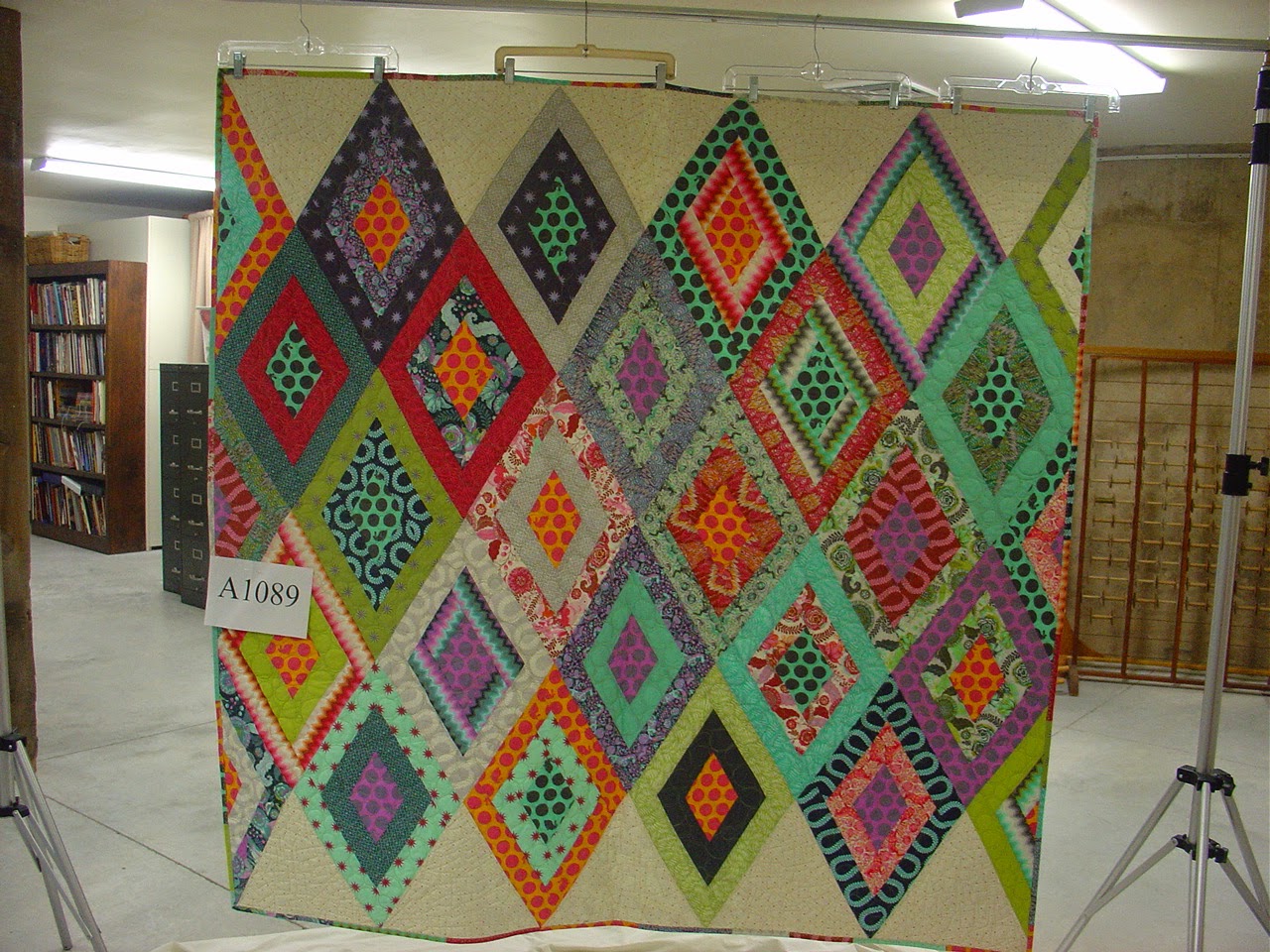This is Sarah Petticrew McWilliams Hawes, with her son Samuel Raymond Hawes. Sarah was born on October 16, 1872, in Ramsey, Illinois. Sarah's granddaughter brought three more of her quilt tops to our documentation day on Saturday, plus many wonderful family photographs.
This is Sarah's Carpenter's Wheel quilt top, made in the classic blue and white.
When she was 18 or so (about the time this photograph was taken), Sarah left the family farm to start her own millinery business, making and designing hats. She told her family she left home because she was tired of pulling off her brothers' muddy boots for them when they came in from the fields.
Here is another of Sarah's quilts. The set is unusual. The quilt owner also has an extra block, and a pillow made out of two more blocks.
All of us who are interested in quilt history owe a great debt to the family historians, who care for the quilts and preserve the stories of the people who made them.
Our documentation day last Saturday at the Wisconsin Museum of Quilts & Fiber Arts was the usual mix of excitement, hard work, and joy. There always seems to be a theme that runs through the quilts we see. This time it was labels.
Over half of the quilts we saw on Saturday had labels! This is an especially nice example. This quilt maker also adds a list of the quilt shows where the quilt has been exhibited to the label, with the awards and ribbons it wins.
We only saw one crazy quilt on Saturday. This one was made as one whole piece, rather than several blocks or strips.
Usually we give a range of dates when the quilt could have possibly been made, based on the fabrics and other clues. Not necessary this time! We have the date, but, unfortunately, the quilt maker didn't put her name on the quilt, so she remains unknown.
This is a close up of the fan in the corner. The embroidery stitches were amazing throughout the quilt.
We are one of the few quilt documentation projects in the whole country that documents newly-made quilts. Six of the quilts we documented on Saturday fit that category.
Check out the wonderful colors! And all of the newer quilts had labels (great job, ladies).
I'm not sure if we've ever had a documentation day without a Grandmothers Flower Garden quilt! (I should look that up.) This is a particularly nice example. The maker made two of these for twin beds, and a larger one for a full sized bed.
The edge is beautifully bound. This was not easy to do!
Here's a terrific scrap quilt. We're calling the pattern Nine Patch Cross.
This quilt was made from a nice deep scrap bag. It is absolutely fascinating to look at. Some of the pieces are the same print in different colorways.
And here, nearly 100 years later, is another quilt of the same "recipe"--simple scrap pattern, lots of different fabrics, pulled together with red cornerstones.
My favorites are always the scrap quilts, and lately I've been drawn to quilts made in the 1960s, like the one above.
There is such a variety of these funky prints, plus all the plaids we used to wear then. The red corner squares really stood out when we hung it for photography, and they pull things together even though they are not all the same red print.
This quilt was made by the owner's grandmother, who lived in rural Georgia and made quilts for warmth. Although most of the year was warm, the winters were cold, and there was often no heat in the house. The maker's daughter said she recognized her Sunday school dress fabrics in this quilt.
All of the stories of these quilts are now recorded, and will soon be entered into the Quilt Index online. The people who make documentations possible are our volunteers. Many, many thanks to Maribeth, Bonnie, Kathleen, and Carol.
Now, how about sewing a label or two on your quilts?
Piecefully yours,
Sylvia
















I don't think you can have a documentation day without a GFG. Back in 1988 it almost happened here in ND--I remarked to my friend near the end of the day, "we haven't seen a single Grandmother's Flower Garden!" So she went to her car and got one from the trunk. "I've been saving this one," she said.
ReplyDeleteThere is a legend among our volunteers of a day when there were 17 GFGs--all made by the same lady! Maybe I'll finish mine some day.
DeleteGreat post. Keep up the good work.
ReplyDeleteThanks, Beth! Same to you!
Delete